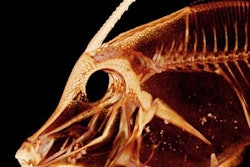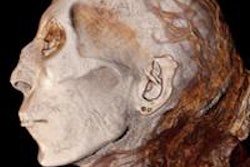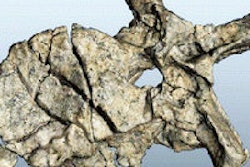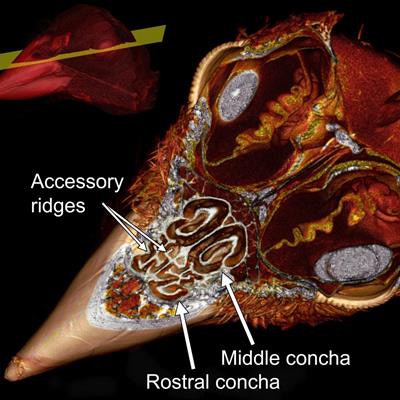
An innovative CT technique has revealed that bird beaks function as complex radiators, cooling systems, and humidifiers all in one, and they vary according to habitat, according to new research published in ornithology journal The Auk: Ornithological Advances.
Beaks come in an array of shapes and sizes that are adapted to surviving in a wide range of environments. In the study, researchers from University of North Carolina Wilmington, Cornell University, and the Smithsonian used diffusible iodine-based contrast-enhanced CT (diceCT) to examine structures inside of birds' beaks, known as conchae, in two subspecies of song sparrows.
One subspecies lives in warm, dry sand dunes, while the other makes its home in a moist habitat further inland. The two closely related subspecies showed significant differences depending on where they lived (Auk, November 9, 2016).
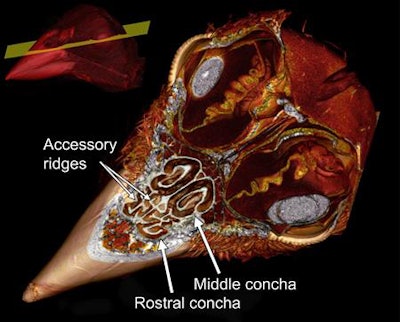 Image created from a 3D rendering of a CT scan shows the nasal conchae inside the bill of a song sparrow, which help it conserve water and regulate the temperature of inhaled air. Credit: E. Gulson-Castillo and E. Sibbald.
Image created from a 3D rendering of a CT scan shows the nasal conchae inside the bill of a song sparrow, which help it conserve water and regulate the temperature of inhaled air. Credit: E. Gulson-Castillo and E. Sibbald."We had been studying the function of the bird bill as a heat radiator, with a focus on heat loss from the external surface and adaptation to local climates, when we began to wonder about the thermoregulatory processes that occur within the bill," said lead author Raymond Danner, PhD, from the University of North Carolina Wilmington, in a statement accompanying release of the study.
"I remember the entire team assembled for the first time, huddled around a computer and looking in amazement at the first scans," he continued. "The high-resolution scans revealed many structures that we as experienced ornithologists had never seen or even imagined, and we were immediately struck by the beauty of the ornately structured anterior conchae and the neatly scrolled middle conchae."
The researchers believe this is the first comparison of conchae structure from birds living along a moisture gradient ranging from dry to humid. The conchae of the dune-dwelling sparrows had a larger surface area and were located farther out in the bill than those of their inland relatives, hypothetically boosting the beaks' ability to cool air and recapture water.
The study highlights the amazing complexity of rostral conchae in songbirds, according to Jason Bourke, PhD, a researcher from the North Carolina Museum of Natural Sciences who was not involved in the study. The complexity has gone largely unnoticed due to the ways in which most birds are collected and preserved. The use of innovative techniques such as diceCT has finally revealed just how complicated bird beaks can be, he added.




